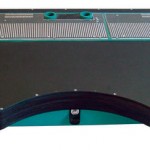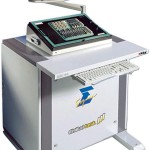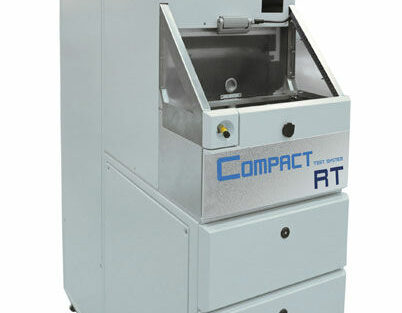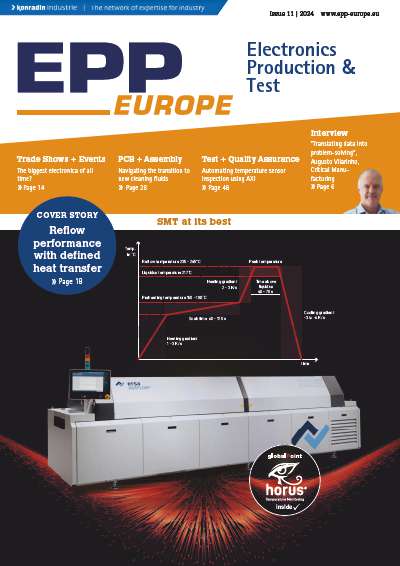There are two major categories of legacy issues in electronics test and repair, the ‘Old legacy system issues’ and the ‘new legacy system issues’. Many areas of manufacturing face the challenge of maintaining older platforms, but manufacturers testing assembled PCBs face a number of unique challenges that require test processes to be available many years after the original manufacturing date. In addition to those products that naturally have a long manufacturing life span, sectors such as industrial control, military, aerospace, infrastructure, medical and automotive products may require test and repair support many years after the manufacturing platforms were scrapped.
The old platform legacy issue can be seen most clearly at repair centres where products are transferred for on-going customer support and maintenance. At these sites many old platforms from differing vendors are transferred with their test interface fixtures, with the expectation that these will provide diagnostic test for field returns. But this strategy has some fundamental flaws.
- Production test processes are developed to address production defects and are not necessarily capable of finding field failure issues. So most will require some rework to address the differing fault spectrum.
- Expectations that platforms and fixtures transferred from production sites will be of sufficient working quality to be readily usable is not always the case.
- Assumptions that the transferred platform is still supported from the original vendor. Since the decline of the capital equipment market after 2000, many of the older platforms are now no longer supported.
- Trust that the skills exist within the repair centre to support a diverse range of platforms and test development environments. Older test platforms used UNIX and other compiled test languages, which may not only require unique development environments but also programming skills that are increasingly rare.
The combined result of these issues is that the on-going support of the many legacy test platforms consumes ever increasing amounts of cash and skills making most repair centres unviable business operations without significant input from a parent organization.
New legacy issues
Trends within the electronics manufacturing industry are pushing more business to lower cost geographies for volume production after the initial product development has been completed within the originating new product introduction centre. Test resources at the target volume manufacturing facility will need to have the same test platform as that used at the development centre. Of course, if the target manufacturing centre is known in advance, steps can be taken to minimize the test transfer task. But volume manufacturing sites are usually selected by purchasing teams based largely on material pricing, delivery and quality and not for their absolute process compatibility.
Globalization trends are also joining together key players within market segments like aerospace and datacom. Each of these players, with their own test strategies and preferred test platforms are now forced to make decisions on which platforms to drop in the interests of compatibility. Such decisions are often postponed as being too sensitive and difficult, further compounding the legacy issue.
Solving legacy test issues
It can be a daunting task to rationalize test strategies for repair centres and newly merged organizations faced with an existing large base of test platforms and test fixtures. But unless some steps are taken to reduce the platform support demands then engineers will be continually distracted from their primary task of supporting customers, with the demands for internal test support.
A ‘step by step’ approach
There are few ‘silver bullet’ solutions for complex engineering tasks. But a measured ‘step by step’ approach will begin to yield results remarkably quick. The first step is to fix a general test strategy that can be applied to the majority of the test tasks. This may be to utilise an existing platform, but is more likely to be more productive when a test platform is chosen that is designed to address the specific challenge. Digitaltest has researched the demand within this market and has developed a dedicated solution, the MTS 300 Sigma. It has been designed to ensure it addresses all the critical features needed for successful test application migration.
A non-multiplexed test pin architecture
Ensuring existing ‘real pin’ multiplexing issues can be accommodated. Here a note on multiplexing might aid our understanding: Many test platforms, including those from HP / Agilent and GenRad / Teradyne, use multiplex test architectures. Multiplexing costly resources was intended to lower the cost per pin by having each ‘real pin’ (those with full analogue, digital drive and sense capability) shared across multiple test head pins. The test engineer needs to ensure the test pin allocation was correctly spread over the available ‘real pins’ for each test. Unfortunately there was no standard for this multiplexing of test pins. Meaning that most test applications cannot simply be loaded onto an alternative test platform that also has a multiplexed architecture.
A universal interface
Having a universal interface capable of accepting fixture converters from all the leading ICT platforms ensures the investment in existing costly test fixtures can be protected and reused in future test strategies.
Software conversion tools
It is desirable to have an automated and consistent test application conversion process. The MTS300 behaves like a ‘neutral platform’ that can emulate existing test programs.
Future support
Clearly the chosen platform should be provided from a leading industry source with a proven track record of providing support over extended lifetime requirements.
Following the test platform selection the next step will be to establish a transfer program in order of priority. The priorities could be:
- The fragility of the existing test platform (age, spares, support etc.)
- The cost of supporting the existing test platform
- The future demand by product type
- The quality of the existing test application (Can improvements be made during the transfer?)
- The ease of transfer
- Available engineering resources
By taking these steps, and with careful planning, measurable results should be evident soon after implementation. Ensuring the present confused state of multiple and obsolete test platforms is rationalised down to a commercially sustainable level and at the same time protecting the considerable investment in test fixtures and applications.
EPP Europe 456
zusammenfassung
Besonders Produkte in den Bereichen industrielle Steuerung, Infrastruktur, Militär, Luftfahrt, Medizin und Automobilherstellung benötigen oftmals Wartung und Reparatur Jahre nachdem ihre Herstellungsplattform verschrottet worden sind. Eine offene Testplattform erleichtert hier die Datenübernahme von Testanwendungen aus Altsystemen.
Ce sont surtout les produits du secteur gestion industrielle, infrastructure, équipement militaire, aéronautique, médecine et construction automobile qui ont besoin d’entretien et de réparations longtemps après la disparition de leur plateforme de fabrication. Une plateforme de test ouverte facilite ici le transfert de données des applications de test issues des anciens systèmes.
Soprattutto i prodotti dei settori controllo industriale, infrastrutture, militare, aeronautica, medicina e costruzioni automobilistiche richiedono spesso una manutenzione e riparazioni molti anni dopo che la loro piattaforma costruttiva è stata rottamata. Una piattaforma di test aperta facilita l’acquisizione dei dati dai vecchi sistemi da parte delle applicazioni di test.
Share:














